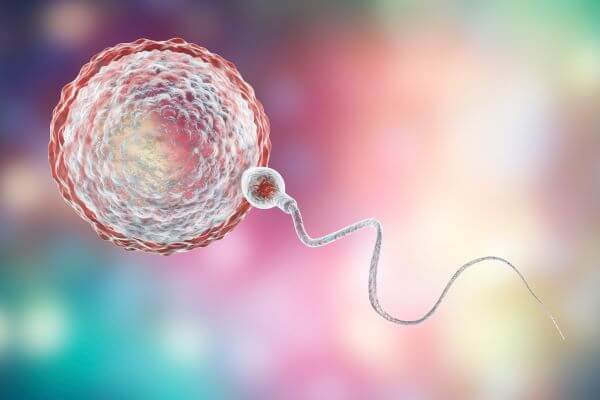There are approximately 200 different types of cells in the human body, but all cells on Earth fit into just two categories; prokaryotes, and eukaryotes.
The Two Types of Cells on Earth
All cells on Earth can be classified as either prokaryotic cells or eukaryotic cells. Eukaryotic organisms may be multicellular or unicellular, but prokaryotes are always unicellular organisms.
Eukaryotic cells are larger and more complex than prokaryotes, and usually contain organelles that are absent from prokaryotic cells. This is because eukaryotes contain membrane-bound organelles (like the nucleus, endoplasmic reticulum, Golgi apparatus, and mitochondria), but prokaryotes do not.
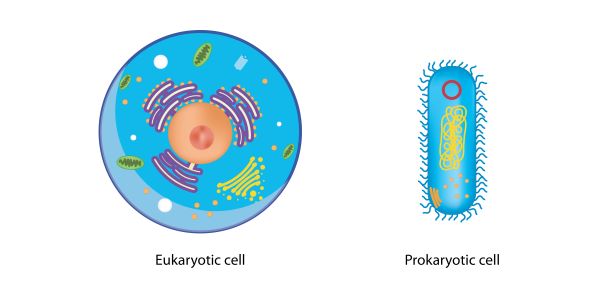
Types of Eukaryotic Cells
The four types of eukaryotic cells are animal cells, plant cells, fungi cells, and protists.
Animal Cells
Animal cells are the basic building blocks that make up all animals, including birds, fish, reptiles, mammals, and amphibians. Like eukaryotic cells, they contain membrane-bound organelles (such as a nucleus, mitochondria, Golgi apparatus, and endoplasmic reticulum), and are surrounded by a plasma membrane.
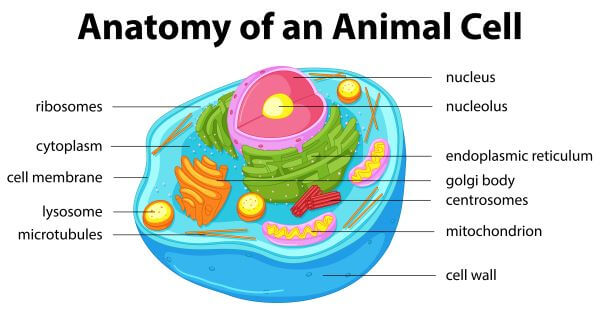
Plant Cells
Plants are made up of plant cells. Plant cells contain many of the organelles common to all eukaryotes, but they contain additional structures that are not found in animal cells. For example, plant cells are surrounded by a tough, cellulose-based structure called the cell wall. They also contain organelles called chloroplasts, which are the site of photosynthesis and allow plant cells to produce carbohydrates from carbon dioxide, water, and light energy.
Fungi Cells
The fungi kingdom consists of yeasts, mildews, molds, and mushrooms. Fungi cells contain many of the structures and organelles found in plant and animal cells, like the nucleus, mitochondria, cell membrane, mitochondria, Golgi apparatus, and endoplasmic reticulum. However, they do not contain chloroplasts. They do have a cell wall but this is mainly composed of a polysaccharide called chitin, rather than cellulose (as is the case in plant cells).
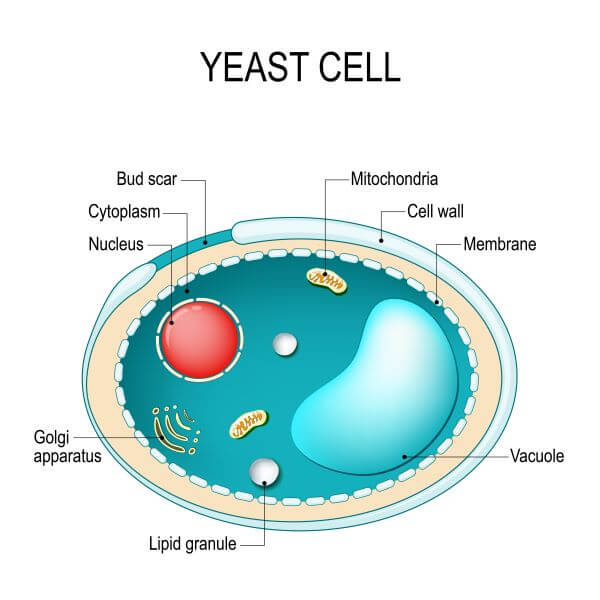
Protist Cells
Protists are a highly diverse group of organisms, and kingdom Protista is comprised of all eukaryotes that are not animals, plants, or fungi. Protist cells contain all of the membrane-bound organelles found in animal cells, and some types also contain chloroplasts. They may also have a cell wall made from cellulose.
Types of Prokaryotic Cells
Prokaryotic cells are smaller and have a simpler structure than eukaryotic cells, as they do not contain membrane-bound organelles. Prokaryotic organisms are always unicellular and may be either bacteria or archaea. Bacterial and archaeal cells have the same basic structure, but some of their components are made from different materials.
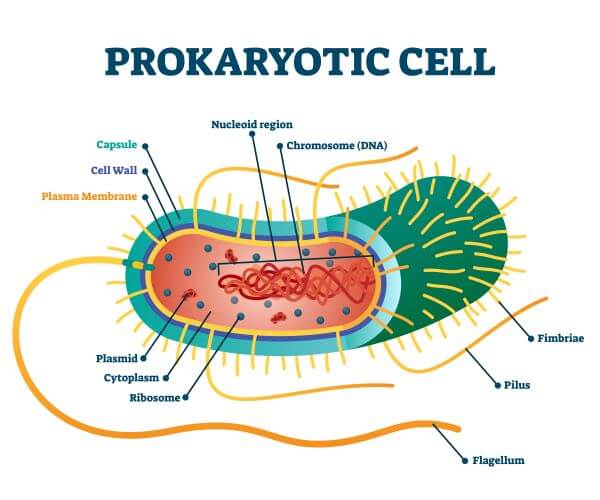
Bacterial Cells
Bacteria are unicellular, prokaryotic organisms. Their cells do not contain membrane-bound organelles, so they have no nucleus, mitochondria, endoplasmic reticulum, or Golgi apparatus. However, they do have a cell membrane, cytoplasm, ribosomes, and free-floating loops of DNA. Bacterial cells also have a cell wall made from a polymer called peptidoglycan (AKA murein). Some bacteria have additional specialized structures, like the capsule (a sticky layer of carbohydrates that surrounds the cell), or flagella (whip-like structures that allow the bacterium to move).
Archaeal Cells
Archaea are also unicellular prokaryotes, and they contain many of the same structures that are found in bacteria cells. However, they typically have a different composition. For example, the bacterial cell wall contains peptidoglycan, but the archaeal cell wall does not. The plasma membrane in bacterial cells (and eukaryotes) is a lipid bilayer, but the plasma membrane of archaeal cells is a lipid monolayer. Finally, the cell membrane in bacteria contains fatty acids, but the cell membranes of archaea contain a hydrocarbon called phytanyl.
Types of Cells in the Human Body
Adult human beings are made up of around 37 trillion individual cells, and approximately 200 different types of cells. Some key cell types of the human body include stem cells, muscle cells, blood cells, bone cells, nerve cells, fat cells, sperm cells, and egg cells.
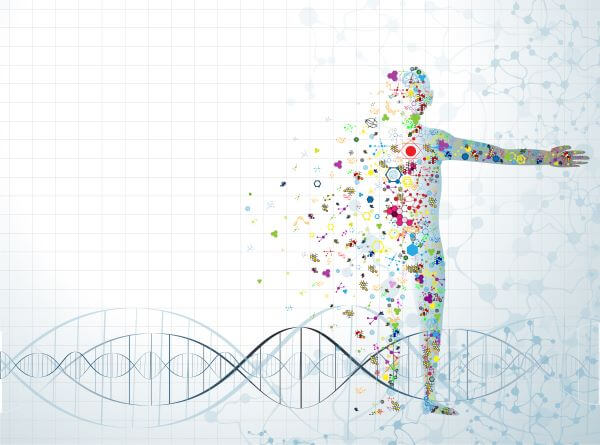
Muscle Cells
Muscle cells are the basic units of muscle tissue. These cells are highly specialized to facilitate muscle contraction and contain protein filaments (called myofibrils) and lots of mitochondria.
Stem cells
Stem cells are cells that can develop into other types of cells. They differentiate to form all of the specialized cells in the human body and are found in both embryos and certain adult body tissues (such as the bone marrow).
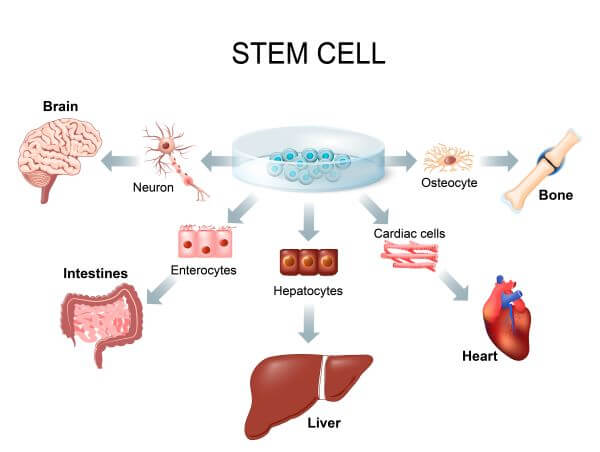
Bone Cells
Bones are living tissues with their own network of blood vessels, and they are made of several different types of cells. The key types of bone cells are osteoclasts (cells that dissolve bone tissue), osteoblasts (cells that make new bone tissue), and osteocytes (which are found inside the bone and communicate with other bone cells).
Blood Cells
Blood contains an assortment of cells. The three major types of blood cells are red blood cells (which carry oxygen), white blood cells (which are components of the immune system, and platelets (cell fragments that allow blood to clot).

Nerve Cells
Nerve cells (AKA neurons) make up the nervous system. Their key function is to carry messages between the body and the brain.
Fat Cells
Fat cells are also known as adipose cells. They are specially adapted to store energy in the form of fat tissue and are found all over the body. The fat tissue that is stored beneath the skin is called subcutaneous fat, and the fat that surrounds the internal organs is known as visceral fat.
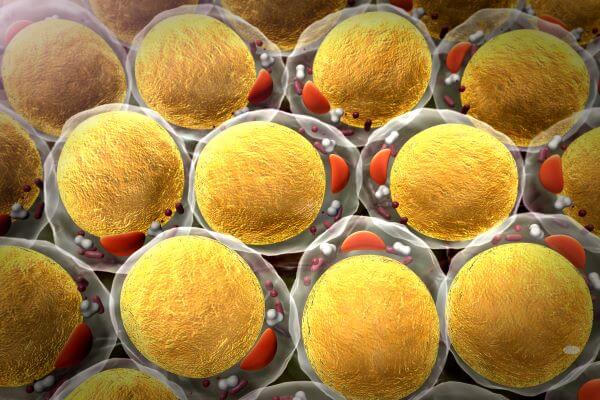
Sperm Cells
Sperm cells are male reproductive cells. They are the smallest type of cell in the human body and have several adaptations for fertilization, such as a tail (for swimming) and lots of mitochondria (for energy production).
Egg Cells
Female reproductive cells are called egg cells. Egg cells are much larger than sperm cells and contain a large amount of nutrient-rich cytoplasm to support the development of the new organism.
